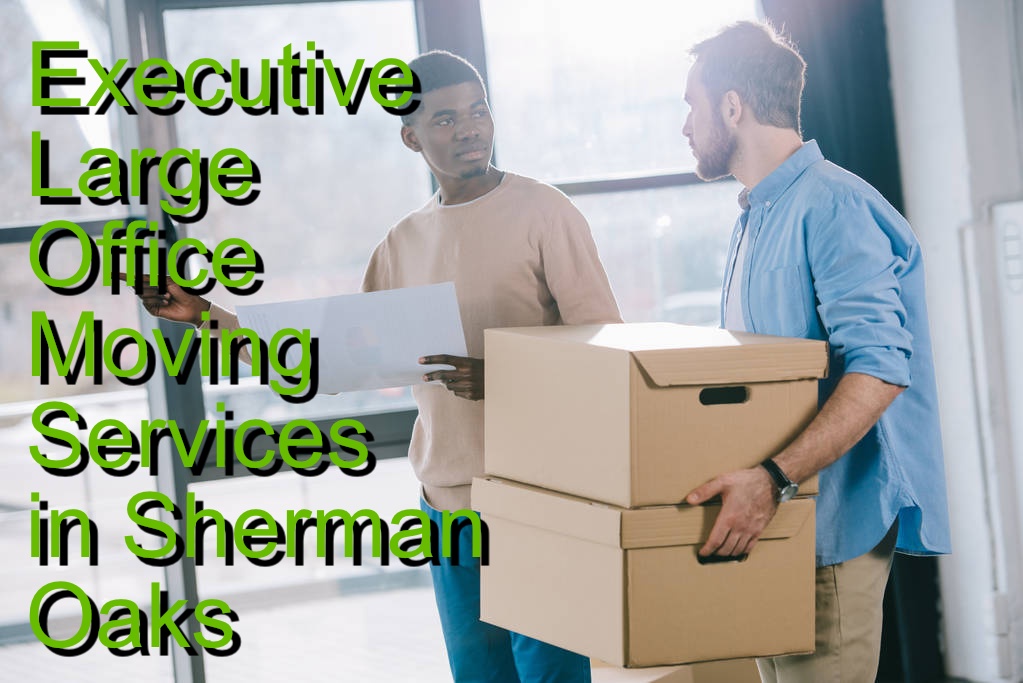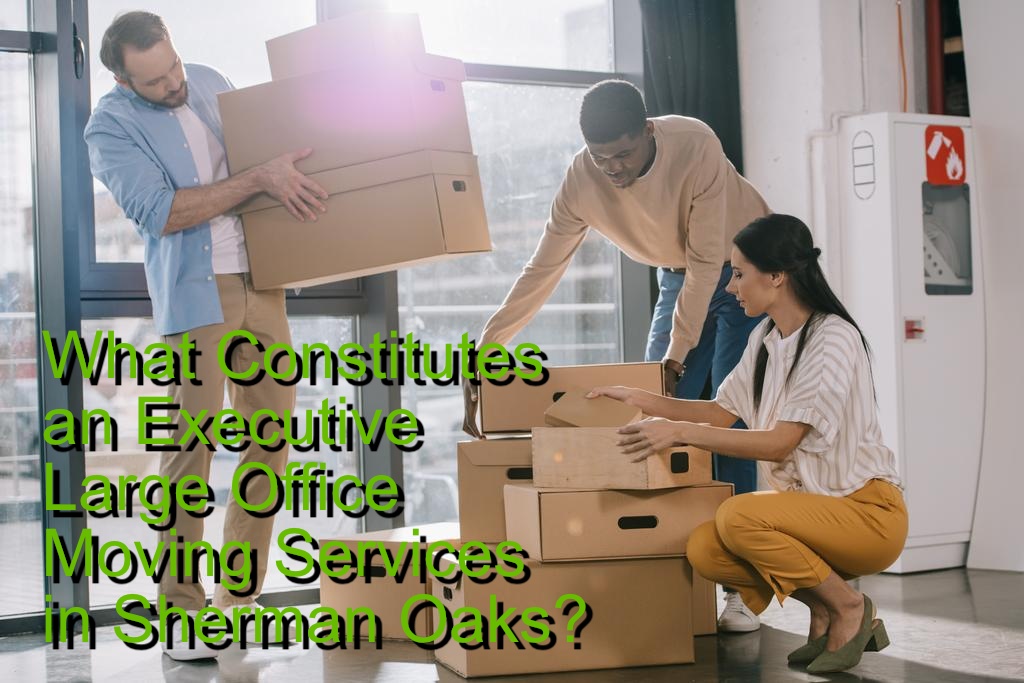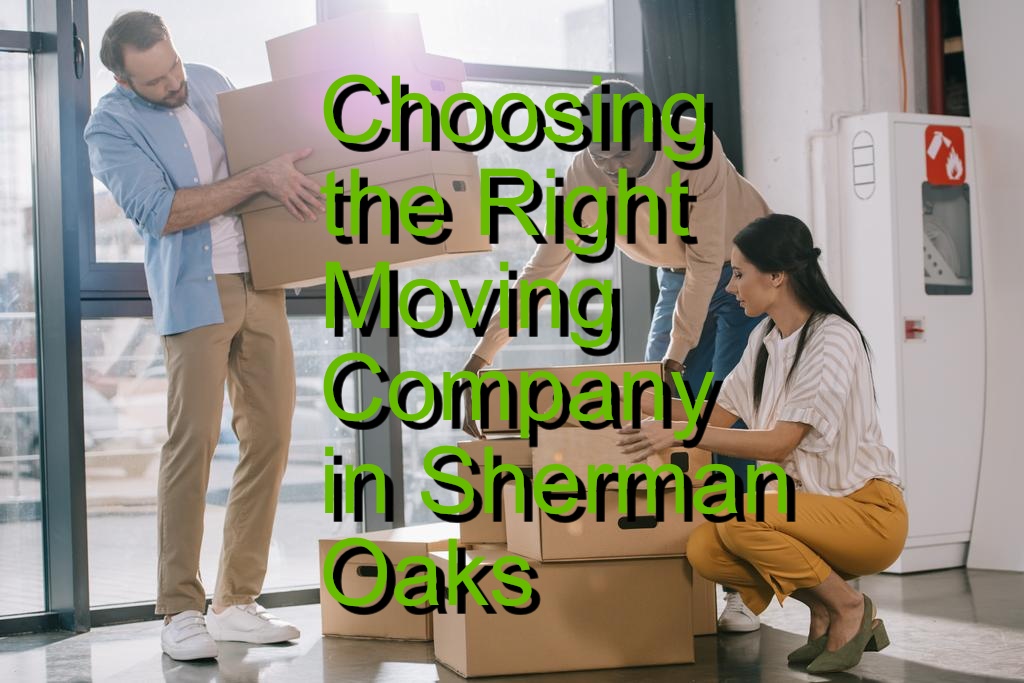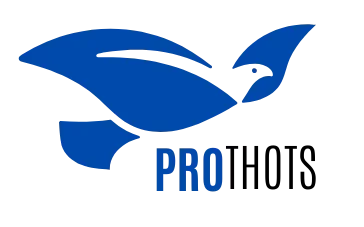Blog
Executive Large Office Moving Services in Sherman Oaks

Moving an executive office is a significant undertaking that requires meticulous planning and execution. Sherman Oaks, a bustling hub in Los Angeles, presents unique challenges and opportunities for businesses looking to relocate. PROthots team aims to provide easy tips for the audience. Whether you’re expanding, downsizing, or simply seeking a better location, understanding the intricacies of executive large office moving services can make the transition seamless and efficient.
Understanding Executive Large Office Moving Services in Sherman Oaks
What Constitutes an Executive Large Office Moving Services in Sherman Oaks?

An executive office move involves relocating high-level corporate offices, including C-suite executives, boardrooms, and specialized departments. These moves often require:
- Confidentiality: Sensitive information must be securely handled.
- Precision Timing: Minimal downtime is crucial to maintain business operations.
- Customized Solutions: Tailored services to meet specific corporate needs.
Why Professional Moving Services are Essential
Professional moving services offer expertise that ensures:
- Efficiency: Streamlined processes reduce downtime.
- Safety: Proper handling of equipment and furniture prevents damage.
- Compliance: Adherence to local regulations and standards.
Key Differences Between Standard and Executive Moves
Executive moves differ from standard office relocations in several ways:
- Scale: Larger volume of high-value items.
- Complexity: More intricate logistical planning.
- Security Needs: Enhanced measures to protect sensitive information.
- Customization: Greater need for personalized services.
Choosing the Right Moving Company in Sherman Oaks

Experience and Expertise
Select a company with a proven track record in executive moves. Look for:
- Specialized Services: Handling of high-value items and sensitive equipment.
- Local Knowledge: Familiarity with Sherman Oaks traffic patterns and regulations.
- Trained Staff: Professionals trained in handling delicate office environments.
Comprehensive Services Offered
Ensure the company provides a full suite of services, including:
- Packing and Unpacking: Professional packing protects assets.
- IT and Equipment Relocation: Specialized handling of technological infrastructure.
- Furniture Assembly and Disassembly: Efficient setup at the new location.
- Temporary Storage Solutions: Options for short-term storage if needed.
Client Testimonials and Reviews
Research client feedback to gauge reliability and quality. Positive testimonials indicate:
- Satisfaction: High levels of client happiness.
- Consistency: Reliable performance across different projects.
- Problem-Solving: Ability to handle unexpected challenges effectively.
Certifications and Accreditations
Check for industry certifications and memberships, such as:
- American Moving & Storage Association (AMSA): Ensures adherence to professional standards.
- ISO Certifications: Demonstrates commitment to quality management.
Planning Your Executive Move
Initial Assessment and Consultation
Begin with a thorough assessment of your current office setup and future needs. Steps include:
- Site Survey: Evaluate the new location’s layout and facilities.
- Inventory Management: Catalog all items to be moved.
- Timeline Creation: Develop a detailed moving schedule.
- Risk Assessment: Identify potential risks and mitigation strategies.
Budgeting for the Move
Create a comprehensive budget that accounts for:
- Moving Costs: Transportation, labor, and materials.
- Unexpected Expenses: Contingency funds for unforeseen issues.
- Downtime Mitigation: Costs associated with minimizing business interruption.
- Insurance: Coverage for high-value items and potential damages.
Communication Strategy
Maintain clear communication with all stakeholders:
- Internal Teams: Keep employees informed about the move details.
- External Partners: Notify clients and vendors of the relocation timeline.
- Moving Company: Ensure alignment on expectations and responsibilities.
- Regular Updates: Schedule meetings to provide progress reports.
Timeline Development
Develop a realistic timeline that includes:
- Pre-Move Planning: Initial assessments and consultations.
- Packing Phase: Scheduling packing activities to minimize disruption.
- Transit Period: Coordinating transportation logistics.
- Setup Phase: Organizing and setting up the new office space.
Technology and IT Planning
Plan for the relocation of IT infrastructure:
- Data Backup: Ensure all data is backed up securely.
- Equipment Inventory: List all IT equipment to be moved.
- Installation Schedule: Plan the setup of IT systems at the new location.
- IT Support: Arrange for IT professionals to oversee the transition.
Employee Relocation Support
Provide support to employees to ease the transition:
- Relocation Assistance Programs: Offer resources for employees moving from other locations.
- Orientation Sessions: Familiarize employees with the new office layout.
- Feedback Channels: Create avenues for employees to voice concerns and suggestions.
Executing the Move
Packing and Labeling
Organize items systematically to facilitate easy unpacking:
- Categorize Items: Group similar items together.
- Label Boxes: Mark each box with its contents and destination room.
- Inventory Lists: Maintain detailed lists to track all items during the move.
Transport Logistics
Coordinate transportation to ensure smooth transit:
- Secure Vehicles: Use appropriate vehicles for different types of items.
- Route Planning: Optimize routes to avoid delays and traffic congestion.
- Timing Coordination: Schedule transportation during off-peak hours to minimize disruptions.
Setting Up the New Office
Ensure a swift setup at the new location:
- Furniture Arrangement: Place furniture according to the new layout plan.
- IT Installation: Set up technological infrastructure promptly.
- Testing Equipment: Verify that all systems are operational.
- Decor and Branding: Incorporate company branding into the new office design.
Quality Control Measures
Implement quality control to ensure everything is in order:
- Inspection: Check all items upon arrival at the new location.
- Damage Reports: Document any damages or issues immediately.
- Final Walkthrough: Conduct a final inspection to confirm completion.
Contingency Planning
Prepare for unexpected events during the move:
- Backup Plans: Have alternative strategies in case of delays or issues.
- Emergency Contacts: Maintain a list of key contacts for quick resolution.
- Flexible Scheduling: Allow for adjustments in the timeline as needed.
Post-Move Considerations
Unpacking and Organization
Facilitate a smooth transition for employees:
- Designated Unpacking Areas: Assign specific zones for different departments.
- Organization Systems: Implement efficient storage solutions.
- Inventory Check: Ensure all items have been received and are in good condition.
Feedback and Evaluation
Assess the move’s success and identify areas for improvement:
- Employee Feedback: Gather input on the relocation process.
- Performance Metrics: Evaluate how the move has impacted business operations.
- Moving Company Review: Assess the performance of the moving service for future reference.
Ongoing Support
Ensure continued functionality post-move:
- Maintenance Services: Regular upkeep of office equipment and facilities.
- Support Teams: Provide assistance for any post-move issues.
- Continuous Improvement: Implement lessons learned for future relocations.
Settling into the New Space
Help employees adapt to the new environment:
- Orientation Tours: Guide employees through the new office layout.
- Team Building Activities: Foster a sense of community in the new space.
- Resource Accessibility: Ensure all necessary resources are easily accessible.
Common Challenges and Solutions
Minimizing Downtime
Challenge: Maintaining business continuity during the move.
Solution: Develop a detailed timeline and coordinate tasks to avoid overlaps that could cause delays.
Handling Sensitive Information
Challenge: Protecting confidential data and documents.
Solution: Use secure packing methods and ensure that only authorized personnel handle sensitive materials.
Managing Employee Concerns
Challenge: Addressing employee anxiety and adaptation to the new space.
Solution: Involve employees in the planning process and provide clear information about the move.
Dealing with Unexpected Issues
Challenge: Navigating unforeseen obstacles like traffic delays or equipment malfunctions.
Solution: Have contingency plans in place and maintain open communication with the moving team.
Ensuring Quality Control
Challenge: Maintaining the integrity of office equipment and furniture.
Solution: Implement thorough inspection processes before, during, and after the move.
Benefits of a Successful Executive Move

Enhanced Productivity
A well-organized move can lead to:
- Improved Workspace Layout: Optimized for better workflow.
- Updated Facilities: Modern amenities enhance employee satisfaction.
- Boosted Morale: A fresh environment can rejuvenate the team.
Cost Savings
Effective planning can reduce expenses by:
- Avoiding Damages: Proper handling prevents costly repairs or replacements.
- Efficient Use of Resources: Minimizing unnecessary expenditures through strategic planning.
- Negotiated Rates: Leveraging relationships with moving companies for better pricing.
Reputation Boost
A smooth relocation demonstrates professionalism and reliability, enhancing your company’s reputation among clients and partners.
Scalability for Future Growth
A successful move sets the foundation for future expansion and scalability, ensuring that the company can adapt to growth seamlessly.
Environmental Impact Reduction
Implementing sustainable moving practices can reduce the company’s carbon footprint and promote environmental responsibility.
Expert Tips for a Seamless Move
Start Early
Begin planning well in advance to accommodate all necessary preparations and avoid last-minute stress.
Stay Organized
Maintain a detailed checklist and monitor progress regularly to ensure all tasks are completed on time.
Choose the Right Timing
Schedule the move during periods of low business activity to minimize disruption.
Invest in Quality Packing Materials
Use high-quality materials to protect valuable items and equipment during transit.
Hire Specialized Movers
Opt for movers with experience in handling executive office relocations to ensure professionalism and efficiency.
Leverage Technology
Utilize project management software and digital tools to streamline the moving process and enhance coordination.
Conduct a Final Walkthrough
Before leaving the old office, perform a final inspection to ensure nothing is left behind and that the space is clean.
Celebrate the Move
Acknowledge the effort put into the relocation with a small celebration or team event to boost morale and mark the new beginning.
Case Study: Successful Executive Move in Sherman Oaks

Background
A leading tech firm in Sherman Oaks needed to relocate its executive offices to accommodate rapid growth and enhance its operational efficiency.
Challenges Faced
- High-Value Equipment: Ensuring the safe transport of sensitive technology.
- Tight Deadlines: Completing the move within a month to align with business expansion plans.
- Space Optimization: Designing the new office layout to support collaborative work environments.
- Employee Coordination: Managing the relocation of over 100 employees without disrupting workflows.
Solution Implemented
The chosen moving company provided a comprehensive plan that included:
- Customized Packing Solutions: Tailored to protect high-value equipment.
- Dedicated Move Coordinator: Ensured seamless communication and coordination.
- Efficient Layout Design: Collaborated with interior designers to optimize the new space.
- Employee Support Programs: Offered resources and assistance to employees during the transition.
Outcome
The move was completed ahead of schedule with no loss or damage to equipment. The new office layout significantly improved team collaboration and overall productivity. Employee feedback was overwhelmingly positive, highlighting the smooth transition and enhanced work environment.
Lessons Learned
- Early Planning: Starting the process early allowed ample time to address potential issues.
- Effective Communication: Keeping all stakeholders informed reduced anxiety and increased cooperation.
- Professional Expertise: Leveraging the skills of experienced movers ensured a high-quality relocation.
Sustainability in Office Moving
Eco-Friendly Packing Materials
Use recyclable and biodegradable materials to minimize environmental impact. Consider:
- Cardboard Boxes: Recycled and recyclable options.
- Biodegradable Packing Peanuts: An eco-friendly alternative to traditional packing fillers.
- Reusable Containers: Durable containers that can be used multiple times.
Efficient Transportation
Opt for fuel-efficient vehicles and plan routes to reduce carbon emissions. Strategies include:
- Electric or Hybrid Trucks: Lower emissions compared to traditional vehicles.
- Optimized Routing: Reducing the number of miles traveled through strategic route planning.
- Consolidated Loads: Maximizing vehicle capacity to minimize trips.
Waste Reduction
Implement strategies to reuse or donate unwanted items instead of discarding them. Actions to take:
- Donation Programs: Partner with local charities to donate gently used furniture and equipment.
- Recycling Initiatives: Ensure that materials like electronics and paper are properly recycled.
- Digital Documentation: Reduce paper usage by transitioning to digital records wherever possible.
Green Certifications
Choose moving companies that hold green certifications, indicating their commitment to sustainable practices. Look for:
- Environmental Management Systems (EMS): Certification demonstrating effective environmental practices.
- Green Business Certifications: Recognition of efforts to minimize environmental impact.
Energy-Efficient Office Setup
Implement energy-efficient solutions in the new office to continue sustainability efforts:
- LED Lighting: Reduces energy consumption and has a longer lifespan.
- Smart Thermostats: Optimizes heating and cooling for energy savings.
- Energy Star Appliances: Ensure that office equipment meets energy efficiency standards.
Technology Integration in Moving Services
Digital Inventory Management
Use software to track and manage all items being moved, ensuring nothing is lost or misplaced. Benefits include:
- Real-Time Tracking: Monitor the status of each item throughout the move.
- Detailed Records: Maintain comprehensive records for accountability and reference.
- Efficiency: Streamline the inventory process, saving time and reducing errors.
Real-Time Tracking
Provide clients with the ability to monitor the move progress in real-time for added transparency. Features include:
- GPS Tracking: Locate moving vehicles and estimate arrival times.
- Status Updates: Receive notifications at key stages of the move.
- Client Portals: Access detailed move information through secure online platforms.
Automated Scheduling
Streamline the moving process with automated scheduling tools to enhance efficiency. Advantages include:
- Optimized Timelines: Ensure tasks are scheduled logically to prevent overlaps.
- Resource Allocation: Efficiently assign resources based on availability and need.
- Flexibility: Easily adjust schedules in response to changes or delays.
Virtual Reality (VR) Planning
Utilize VR to plan and visualize the new office layout before the move. Benefits include:
- Interactive Design: Experiment with different layouts and configurations in a virtual space.
- Stakeholder Engagement: Involve executives and employees in the design process with immersive experiences.
- Error Reduction: Identify and address potential design issues before implementation.
Mobile Applications for Coordination
Leverage mobile apps to facilitate communication and coordination among the moving team. Features may include:
- Task Management: Assign and track tasks in real-time.
- Instant Communication: Enable quick updates and problem-solving through messaging features.
- Document Sharing: Access and share important documents and plans on the go.
Legal and Compliance Considerations

Permits and Licenses
Ensure all necessary permits are obtained to avoid legal issues during the move. Steps include:
- Local Permits: Obtain permits required for moving trucks to access certain areas or buildings.
- Parking Permissions: Secure designated parking spots for moving vehicles at both the old and new locations.
- Building Regulations: Comply with any specific rules or restrictions set by the building management.
Insurance Coverage
Verify that the moving company has adequate insurance to cover any potential damages or losses. Key aspects include:
- Liability Insurance: Protects against damage to property during the move.
- Cargo Insurance: Covers loss or damage to items being transported.
- Worker’s Compensation: Ensures that moving staff are covered in case of injury during the move.
Data Protection
Adhere to data protection regulations to safeguard sensitive information during the relocation. Measures to implement:
- Secure Data Handling: Ensure that all digital and physical data is handled according to privacy laws.
- Shredding Services: Properly dispose of sensitive documents that are no longer needed.
- Access Controls: Limit access to sensitive areas and information to authorized personnel only.
Contractual Agreements
Review and understand all contractual agreements with the moving company. Important elements to consider:
- Scope of Services: Clearly define what services are included in the move.
- Payment Terms: Understand the payment schedule and any potential additional costs.
- Liability Clauses: Know the extent of the moving company’s liability in case of damages or losses.
- Termination Conditions: Be aware of the conditions under which the contract can be terminated.
Compliance with Labor Laws
Ensure that the moving process complies with all relevant labor laws, including:
- Fair Wages: Guarantee that all moving staff are paid fairly and in accordance with local regulations.
- Work Hours: Adhere to laws governing working hours and breaks.
- Safety Standards: Implement safety protocols to protect workers during the move.
Customizing Your Move
Tailored Moving Plans
Develop moving plans that align with your specific business needs and objectives. Considerations include:
- Business Operations: Plan the move around critical business operations to minimize disruption.
- Special Requirements: Address any unique needs, such as handling specialized equipment or accommodating specific schedules.
- Scalability: Ensure the moving plan can adapt to any changes in business size or structure during the relocation process.
Flexible Scheduling
Offer flexibility in scheduling to accommodate any unforeseen changes or requirements. Strategies include:
- Multiple Move Dates: Provide options for different move dates to choose the most convenient one.
- Phased Moves: Implement the move in stages to allow parts of the office to remain operational.
- Weekend or After-Hours Moves: Schedule moves during non-business hours to reduce impact on daily operations.
Personalized Services
Provide services that cater to unique aspects of your business, such as specialized equipment handling or bespoke office setups. Examples include:
- Custom Crating: Design bespoke crates for delicate or high-value items.
- Specialized Installation: Offer expert setup for complex systems like audiovisual equipment or secure server rooms.
- Aesthetic Design Services: Collaborate with designers to ensure the new office reflects the company’s brand and culture.
Scalable Solutions
Ensure that the moving services can scale according to your business’s growth or contraction. Features include:
- Modular Services: Add or remove services as needed based on the size and scope of the move.
- Resource Flexibility: Adjust the number of moving personnel and equipment according to requirements.
- Adaptive Planning: Modify the moving plan to accommodate changes in business needs or timelines.
Integration with Existing Systems
Ensure that the move integrates seamlessly with your existing business systems and processes. Steps to take:
- IT System Compatibility: Ensure that new IT systems are compatible with existing software and hardware.
- Process Alignment: Align moving activities with current business processes to maintain continuity.
- Training Programs: Provide training for employees on any new systems or processes introduced during the move.
Advanced Moving Strategies
Just-In-Time Moving
Implement just-in-time moving strategies to ensure that items arrive at the new location precisely when needed. Benefits include:
- Reduced Storage Needs: Minimize the need for temporary storage by synchronizing the move schedule.
- Enhanced Efficiency: Streamline the moving process by aligning transportation with unpacking and setup.
- Cost Savings: Reduce costs associated with storage and extended move durations.
Modular Moving Systems
Use modular moving systems to facilitate flexibility and adaptability during the move. Features include:
- Interchangeable Components: Easily reconfigure moving equipment and materials as needed.
- Space Optimization: Efficiently use space in moving vehicles and storage areas.
- Quick Assembly and Disassembly: Speed up the moving process with modular systems that can be quickly set up and taken down.
Green Moving Practices
Adopt green moving practices to promote sustainability and reduce environmental impact. Practices include:
- Carbon Offset Programs: Invest in projects that offset the carbon emissions generated by the move.
- Energy-Efficient Equipment: Use moving equipment that consumes less energy and produces fewer emissions.
- Sustainable Transportation: Choose transportation methods that prioritize fuel efficiency and lower emissions.
Integrated Security Measures
Implement integrated security measures to protect assets during the move. Strategies include:
- Surveillance Systems: Monitor moving operations with cameras and security personnel.
- Access Control: Restrict access to moving areas to authorized individuals only.
- Asset Tracking: Use RFID tags or GPS tracking to monitor the location of high-value items throughout the move.
Post-Move Optimization
Focus on optimizing the new office setup post-move to enhance functionality and efficiency. Steps include:
- Workflow Analysis: Assess how the new layout impacts business operations and make adjustments as needed.
- Space Utilization: Maximize the use of available space to support business activities.
- Continuous Improvement: Implement ongoing improvements based on employee feedback and operational needs.
Trends in Executive Office Moving Services
Smart Moving Solutions
The integration of smart technology in moving services is revolutionizing the industry. Innovations include:
- IoT Devices: Utilize Internet of Things (IoT) devices for real-time tracking and monitoring of assets.
- AI-Powered Planning: Use artificial intelligence to optimize move planning and logistics.
- Automated Processes: Implement automation in packing, inventory management, and scheduling to increase efficiency.
Virtual Moving Assistants
Virtual assistants are becoming integral in managing moving processes. Features include:
- 24/7 Availability: Provide round-the-clock support and information to clients.
- Task Automation: Automate routine tasks such as scheduling and inventory tracking.
- Enhanced Communication: Facilitate seamless communication between all parties involved in the move.
Sustainable Moving Initiatives
Sustainability remains a key focus in executive office moving services. Initiatives include:
- Green Certifications: Pursue certifications that recognize commitment to sustainable practices.
- Eco-Friendly Packaging: Develop and use packaging materials that are environmentally friendly.
- Waste Reduction Programs: Implement programs to minimize waste generation during the move.
Customized Client Experiences
Providing personalized experiences tailored to each client’s unique needs is becoming a standard. Approaches include:
- Personalized Move Plans: Develop customized plans that align with each client’s specific requirements.
- Dedicated Move Coordinators: Assign dedicated coordinators to manage each move and address client needs.
- Client-Centric Technologies: Use technologies that enhance the client experience, such as virtual walkthroughs and real-time updates.
Enhanced Security Protocols
Security continues to evolve with more sophisticated measures being implemented. Enhancements include:
- Advanced Surveillance Systems: Use high-tech surveillance to monitor moving operations.
- Cybersecurity Measures: Protect digital assets and data with robust cybersecurity protocols.
- Comprehensive Insurance Options: Offer more extensive insurance coverage to protect against a wider range of risks.
Security Considerations in Executive Moves
Physical Security Measures
Implement robust physical security measures to protect assets during the move:
- Secure Transportation: Use armored vehicles for transporting high-value items.
- Security Personnel: Employ trained security staff to oversee the move and protect assets.
- Restricted Access: Limit access to moving areas to authorized personnel only.
Data Security Protocols
Ensure that all data is securely handled during the move:
- Encrypted Data Transfers: Use encryption for all digital data being moved or accessed.
- Secure Storage: Store sensitive data in secure, access-controlled environments.
- Data Disposal: Properly dispose of any data storage devices that are no longer needed.
Asset Tracking Systems
Utilize asset tracking systems to monitor and protect assets throughout the move:
- RFID Tags: Attach RFID tags to high-value items for real-time tracking.
- GPS Monitoring: Use GPS systems to track the location of moving vehicles and assets.
- Inventory Management Software: Maintain a detailed inventory that can be easily monitored and updated.
Compliance with Security Standards
Adhere to industry-standard security protocols to ensure comprehensive protection:
- ISO/IEC 27001: Follow standards for information security management systems.
- SOC 2 Compliance: Ensure that security practices meet Service Organization Control (SOC) 2 requirements.
- Local Security Regulations: Comply with all local laws and regulations related to security during the move.
Employee Training on Security Practices
Train employees on security best practices to minimize risks:
- Security Awareness Programs: Educate employees about potential security threats and how to mitigate them.
- Protocol Training: Train employees on specific security protocols related to the move.
- Incident Response Plans: Develop and train employees on plans to respond to security breaches or incidents.
Employee Relocation Assistance
Relocation Packages
Offer comprehensive relocation packages to support employees during the move:
- Financial Assistance: Provide moving allowances or reimbursements for moving expenses.
- Housing Assistance: Help employees find suitable housing in the new location.
- Family Support: Offer resources and support for employees’ families, such as school placement assistance.
Orientation Programs
Implement orientation programs to help employees acclimate to the new office and area:
- New Office Tours: Guide employees through the new office layout and facilities.
- Local Area Information: Provide information about the Sherman Oaks area, including amenities, transportation, and services.
- Integration Activities: Organize events to help employees connect and build relationships in the new environment.
Flexible Work Arrangements
Provide flexible work arrangements to ease the transition:
- Remote Work Options: Allow employees to work remotely during the moving period.
- Flexible Scheduling: Offer flexible hours to accommodate moving tasks and personal needs.
- Temporary Workspaces: Set up temporary workspaces if the new office is not ready immediately.
Wellness Support
Support employees’ well-being during the move:
- Stress Management Resources: Provide access to counseling or stress-relief programs.
- Health and Wellness Programs: Offer wellness initiatives to support physical and mental health.
- Employee Assistance Programs (EAP): Provide confidential support services for personal or professional issues.
Career Development Opportunities
Leverage the move as an opportunity for employee growth:
- Training Programs: Offer training to help employees adapt to new roles or responsibilities.
- Leadership Opportunities: Create opportunities for employees to take on new leadership roles in the new office.
- Career Path Planning: Assist employees in planning their career paths within the newly structured organization.
Environmental Sustainability in Depth
Sustainable Office Design
Incorporate sustainable design principles in the new office:
- Energy-Efficient Layouts: Design spaces that maximize natural light and reduce energy consumption.
- Green Building Materials: Use materials that are environmentally friendly and sustainable.
- Biophilic Design: Integrate natural elements into the office to enhance employee well-being and productivity.
Carbon Footprint Reduction
Implement strategies to minimize the carbon footprint of the move:
- Carbon Footprint Assessment: Evaluate the environmental impact of the move and identify areas for improvement.
- Offset Programs: Invest in projects that offset the carbon emissions generated by the move.
- Sustainable Transportation Choices: Choose transportation methods that prioritize fuel efficiency and lower emissions.
Waste Management Strategies
Develop comprehensive waste management strategies to reduce waste during the move:
- Recycling Programs: Implement recycling initiatives for all types of waste generated during the move.
- Composting: Use composting for organic waste where possible.
- Zero-Waste Goals: Aim to achieve zero waste by reusing, recycling, and repurposing all materials.
Green Certifications for the New Office
Pursue green certifications to demonstrate commitment to sustainability:
- LEED Certification: Achieve Leadership in Energy and Environmental Design (LEED) certification for the new office.
- Energy Star Certification: Ensure that office equipment and systems meet Energy Star standards.
- Green Seal Certification: Obtain certifications that recognize sustainable business practices.
Sustainable Vendor Partnerships
Partner with vendors that prioritize sustainability:
- Eco-Friendly Suppliers: Choose suppliers who offer sustainable products and services.
- Local Vendors: Support local businesses to reduce transportation-related emissions.
- Sustainable Practices: Ensure that all vendors adhere to sustainable practices in their operations.
Advanced Technology in Office Moving

Artificial Intelligence (AI) for Optimization
Utilize AI to optimize various aspects of the move:
- Predictive Analytics: Use AI to predict potential challenges and optimize solutions.
- Resource Allocation: Automate the allocation of resources based on real-time data and needs.
- Process Automation: Implement AI-driven automation for repetitive tasks to increase efficiency.
Blockchain for Transparency
Implement blockchain technology to enhance transparency and security:
- Immutable Records: Maintain secure and unalterable records of the moving process.
- Smart Contracts: Use blockchain-based contracts to ensure compliance and automate payments.
- Traceability: Track the movement of assets with blockchain to ensure accountability and security.
Virtual Reality (VR) for Planning and Training
Leverage VR for better planning and training:
- Virtual Tours: Conduct virtual tours of the new office space to plan layouts and designs.
- Training Simulations: Use VR to train staff on new office layouts and equipment setups.
- Stakeholder Engagement: Engage stakeholders with immersive VR experiences to visualize the move.
Internet of Things (IoT) for Smart Office Setup
Integrate IoT devices for a smarter office setup:
- Smart Lighting: Implement IoT-enabled lighting systems that adjust based on occupancy and natural light.
- Climate Control: Use IoT devices to optimize heating, cooling, and ventilation for energy efficiency.
- Asset Management: Monitor and manage office assets with IoT sensors for real-time tracking and maintenance.
Cloud-Based Collaboration Tools
Enhance collaboration during and after the move with cloud-based tools:
- Document Sharing: Use cloud platforms for easy access and sharing of important documents.
- Project Management: Implement cloud-based project management tools to coordinate moving tasks.
- Communication Platforms: Facilitate seamless communication among teams with cloud-based messaging and conferencing tools.
Legal and Compliance Best Practices
Adhering to OSHA Regulations
Ensure compliance with Occupational Safety and Health Administration (OSHA) regulations:
- Safety Protocols: Implement safety measures to protect workers during the move.
- Training Programs: Train employees on OSHA standards and safe moving practices.
- Incident Reporting: Establish procedures for reporting and addressing safety incidents.
Compliance with Local Laws
Understand and comply with local laws and regulations in Sherman Oaks:
- Zoning Laws: Ensure that the new office location complies with zoning regulations.
- Noise Ordinances: Adhere to local noise restrictions during the move to avoid fines and disruptions.
- Building Codes: Comply with building codes related to occupancy, safety, and accessibility.
Environmental Regulations
Follow environmental regulations to minimize the move’s impact:
- Emission Standards: Ensure that transportation methods meet local emission standards.
- Waste Disposal Laws: Comply with laws governing the disposal and recycling of waste materials.
- Resource Conservation: Adhere to regulations promoting the conservation of resources during the move.
Data Privacy Laws
Protect data privacy during the relocation:
- GDPR Compliance: If applicable, ensure that data handling practices comply with the General Data Protection Regulation (GDPR).
- Local Privacy Laws: Adhere to any additional local data privacy laws that may apply.
- Data Encryption: Use encryption to protect sensitive data during transit and storage.
Contractual Compliance
Ensure that all contractual obligations are met:
- Service Level Agreements (SLAs): Adhere to agreed-upon service levels with the moving company.
- Non-Disclosure Agreements (NDAs): Protect confidential information through NDAs with all parties involved.
- Liability Clauses: Understand and comply with liability clauses to avoid legal disputes.
Optimizing Post-Move Operations
Workflow Integration
Ensure that business workflows integrate smoothly with the new office setup:
- Process Mapping: Map out business processes to align with the new office layout.
- Technology Integration: Ensure that all technological systems are fully operational and integrated.
- Continuous Monitoring: Monitor workflows to identify and address any inefficiencies post-move.
Space Utilization Analysis
Analyze space utilization to maximize efficiency:
- Employee Density: Assess the number of employees per workspace to ensure comfort and productivity.
- Meeting Room Usage: Evaluate the utilization of meeting rooms and adjust as necessary.
- Common Areas: Optimize the use of common areas to foster collaboration and relaxation.
Employee Productivity Monitoring
Monitor employee productivity to gauge the move’s impact:
- Performance Metrics: Track key performance indicators (KPIs) to assess productivity levels.
- Feedback Surveys: Conduct surveys to gather employee insights on the new office environment.
- Adjustments: Make necessary adjustments based on feedback and productivity data.
Continuous Improvement Programs
Implement continuous improvement programs to enhance operations:
- Lean Management: Apply lean principles to eliminate waste and improve efficiency.
- Kaizen Events: Hold regular events focused on making small, incremental improvements.
- Employee Involvement: Encourage employees to contribute ideas for improving office operations.
Maintaining Office Aesthetics
Maintain a pleasant and professional office environment:
- Regular Maintenance: Ensure that the office is kept clean and well-maintained.
- Aesthetic Upgrades: Periodically update office decor to keep the environment fresh and inspiring.
- Personalization: Allow employees to personalize their workspaces to enhance comfort and satisfaction.
Advanced Moving Logistics
Interdepartmental Coordination
Coordinate moving logistics across various departments:
- Centralized Planning: Use a central planning team to oversee all moving activities.
- Departmental Liaisons: Assign liaisons for each department to facilitate communication and coordination.
- Integrated Schedules: Align moving schedules with departmental workflows to minimize disruption.
High-Value Asset Management
Manage high-value assets with extra care and attention:
- Specialized Handling: Use trained personnel to handle fragile or valuable items.
- Secure Storage: Provide secure storage solutions for high-value assets during transit.
- Detailed Documentation: Maintain comprehensive records of all high-value items being moved.
International Relocation Considerations
Address the complexities of international office relocations:
- Customs Regulations: Understand and comply with customs requirements for transporting goods internationally.
- Cultural Considerations: Consider cultural differences in the new location when planning the move.
- Global Coordination: Coordinate with international moving partners to ensure a seamless transition.
Emergency Response Planning
Prepare for emergencies during the move:
- Emergency Protocols: Develop protocols for responding to emergencies such as accidents or natural disasters.
- First Aid Kits: Ensure that first aid kits are available and accessible during the move.
- Communication Plans: Establish clear communication channels for emergency situations.
Optimizing Loading and Unloading Processes
Enhance the efficiency of loading and unloading:
- Sequential Loading: Load items in a sequence that facilitates easy unloading at the new location.
- Team Coordination: Assign specific teams to handle different aspects of loading and unloading.
- Equipment Utilization: Use the right equipment, such as dollies and lifts, to move heavy items safely and efficiently.
Innovative Moving Solutions
Modular Office Systems
Implement modular office systems to enhance flexibility and adaptability:
- Flexible Furniture: Use furniture that can be easily reconfigured to suit different needs.
- Partition Systems: Install movable partitions to create adaptable workspaces.
- Scalable Solutions: Design office systems that can scale with the company’s growth.
Smart Office Technologies
Incorporate smart technologies to create a more efficient office environment:
- Automated Lighting Systems: Use sensors and automation to control lighting based on occupancy and natural light.
- Smart HVAC Systems: Implement HVAC systems that adjust settings for optimal comfort and energy efficiency.
- Integrated Security Systems: Use smart security systems that provide enhanced protection and monitoring.
Collaborative Workspace Design
Design collaborative workspaces to foster teamwork and innovation:
- Open Layouts: Create open office layouts that encourage communication and collaboration.
- Meeting Pods: Install small meeting pods for private discussions and brainstorming sessions.
- Shared Resources: Provide shared resources, such as whiteboards and brainstorming tools, to support collaborative efforts.
Employee-Centric Office Design
Focus on employee needs in office design to enhance satisfaction and productivity:
- Ergonomic Furniture: Use furniture that supports employee health and comfort.
- Quiet Zones: Create quiet zones for focused work and relaxation areas for breaks.
- Personalization Options: Allow employees to personalize their workspaces to their preferences.
Future-Proofing Your Office
Design the new office with future needs in mind to ensure long-term functionality:
- Flexible Infrastructure: Install infrastructure that can easily adapt to future technological advancements.
- Scalable Layouts: Design layouts that can accommodate future growth and changes in team size.
- Sustainable Practices: Incorporate sustainable practices that will remain relevant and beneficial in the future.
Implementing a Successful Executive Move

Pre-Move Preparations
Thorough preparations are crucial for a successful move:
- Detailed Planning: Develop a comprehensive moving plan covering all aspects of the move.
- Resource Allocation: Allocate the necessary resources, including budget, personnel, and equipment.
- Risk Management: Identify potential risks and develop strategies to mitigate them.
Effective Communication
Maintain open and effective communication throughout the moving process:
- Regular Updates: Provide regular updates to all stakeholders about the move’s progress.
- Feedback Mechanisms: Implement mechanisms for receiving and addressing feedback from employees.
- Transparent Processes: Ensure transparency in all moving processes to build trust and cooperation.
Professional Moving Services
Leverage the expertise of professional moving services to ensure a smooth transition:
- Experienced Movers: Hire movers with experience in executive office relocations.
- Comprehensive Services: Choose a moving company that offers a wide range of services to meet all your moving needs.
- Quality Assurance: Ensure that the moving company follows quality assurance protocols to maintain high standards.
Post-Move Evaluation
Conduct a thorough evaluation after the move to assess its success:
- Performance Analysis: Analyze the performance of the moving process against the initial plan.
- Employee Feedback: Gather feedback from employees to identify strengths and areas for improvement.
- Continuous Improvement: Use the evaluation results to improve future moving processes.
Celebrating the Move
Celebrate the successful move to acknowledge everyone’s efforts and foster a positive work environment:
- Team Events: Organize events to celebrate the new office and the successful relocation.
- Recognition: Recognize and reward the teams and individuals who contributed to the move.
- Positive Reinforcement: Use the celebration as an opportunity to reinforce company values and goals.
Conclusion
Relocating an executive office in Sherman Oaks is a complex process that demands careful planning, professional expertise, and a strategic approach. By partnering with experienced moving services, businesses can ensure a smooth transition that minimizes downtime, protects valuable assets, and sets the stage for continued growth and success. Investing time and resources into a well-executed move not only enhances operational efficiency but also reinforces your company’s commitment to excellence and professionalism.
Moreover, integrating advanced technologies, sustainable practices, and comprehensive support systems can further elevate the moving experience, making it not just a logistical task but a strategic opportunity for improvement and innovation. As Sherman Oaks continues to thrive as a business hub, staying informed about the latest trends and best practices in office moving services will ensure that your business remains agile, competitive, and ready to seize new opportunities.
FAQs
1. How far in advance should I start planning my executive office move?
It’s recommended to begin planning at least three to six months in advance to ensure all aspects are thoroughly addressed.
2. What should I look for in a moving company for an executive office move?
Seek a company with specialized experience, comprehensive services, positive client testimonials, and proper insurance coverage.
3. How can I minimize downtime during the move?
Develop a detailed timeline, coordinate tasks efficiently, and schedule the move during low business activity periods.
4. What measures are taken to protect sensitive information during the move?
Use secure packing methods, limit access to authorized personnel, and ensure compliance with data protection regulations.
5. Can the moving company assist with the office setup at the new location?
Yes, many professional
